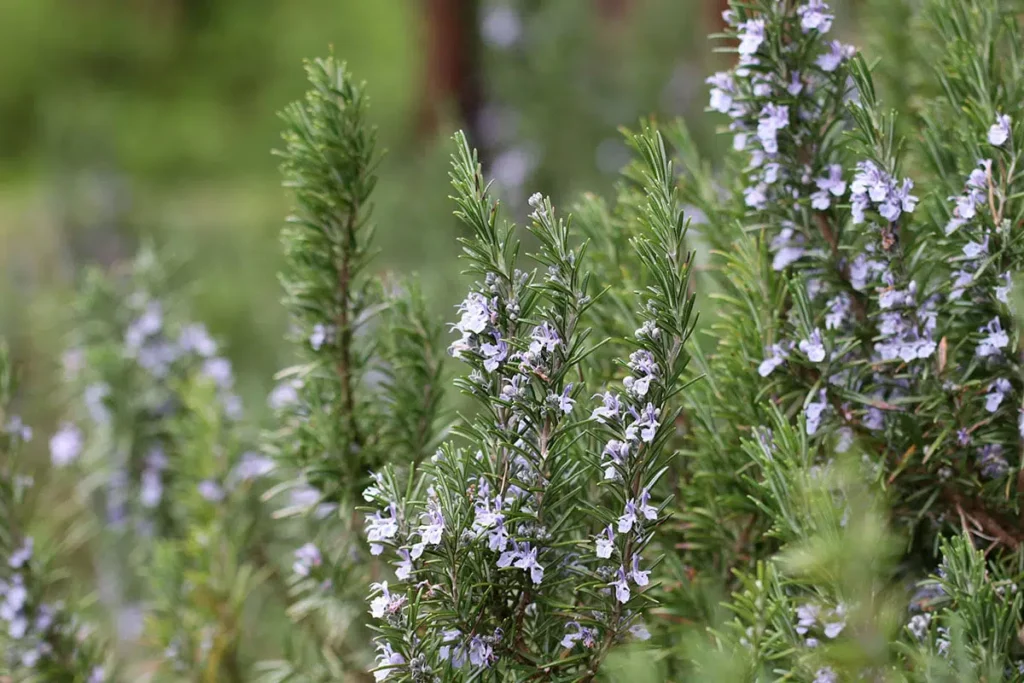With good care rosemary in the spring impresses with bright purple lip flowers. They magically attract bees. Is flowering rosemary edible? Does its taste change? We have the most important information for you.
- Spice herb from the Mediterranean
- flowering rosemary attracts bees and bumblebees
- rosemary flowers edible and healthy
- potency, taste and consistency of the plant unchanged during flowering
Contents
Rosemary
Along with basil, mint, sage and thyme, rosemary (Rosmarinus officinalis) is considered one of the most important culinary herbs. It belongs to the family of labiates. The cultivation of the robust plant succeeds even beginners. After a few years, a vigorous shrub develops. The scent of the needle-like leaves, which is due to the high content of essential oils, has a pleasant and relaxing effect. Rosemary oil is used in aromatherapy.
Description:
- evergreen shrub
- height up to 1 meter
- lip flowers light blue, pink, white, light purple
During flowering
In a sheltered sunny and warm location with well-drained, calcareous soil, numerous flowers form in spring. The labiate flowers consist of a tube and five fused petals. Two petals form the upper lip, and three more form the lower lip. They are white, light blue, light purple or pink in color and pretty to look at.
Flowering rosemary magically attracts bees and flower-visiting insects. The culinary herb is considered an important bee forage plant. Combine rosemary in a container or bed with lavender or thyme. By the way, flowering rosemary has a pleasant scent and strengthens the ability to concentrate. Put rosemary branches in a vase and enjoy the aroma.
Use
Flowering rosemary is edible. In the kitchen, it is used in both savory dishes and desserts. Game dishes are enhanced by its gentle flavor and pleasant aroma. Especially lamb and pork, but also vegetable and potato dishes gain from the spicy leaves and flowers. The spicy flavor of rosemary does not change during flowering.
Tip: Cut a few flowering rosemary branches from the bush. Put them in a linen bag and hang it between coats, dresses and jackets in the closet. Rosemary is excellent for improving closet atmosphere.
Rosemary tea
- Cut a sprig of rosemary that is in bloom.
- Place the sprig in a tea glass and pour hot water over it.
- After brewing for four minutes, you can remove the sprig and enjoy the tea.
Note: The spicy, slightly bitter tea has a stimulating effect and is recommended for people with low blood pressure.
Rosemary flower butter
- Mix 250 grams of room-warm butter with chopped herbs, for example, chives and parsley.
- Mix in 10 grams of chopped rosemary flowers.
- Season the butter with salt, pepper and a pinch of sugar.
- Decorate the flower butter with a sprig of rosemary in bloom.
Rosemary flower oil
- Cut off a flowering rosemary sprig.
- Clean it carefully without washing it.
- Place the sprig in a decorative vial with a wide neck.
- Add extra virgin olive oil, sunflower oil or canola oil.
- Seal the vial airtight.
- Store the herb oil in a dark, cool place.
Note: Over time, the rosemary aroma will become stronger. Enhance salads with the spicy oil.
Frequently asked questions:
What leads to the absence of rosemary flowering?
A warm location in winter prevents the formation of flowers. The spice herb is hardy. In cold mountainous areas, we recommend winter protection of brushwood and foliage. In temperate regions, the plant does not need protection in winter. Potted plants require a cool, dark location with a maximum room temperature of 12 degrees. If rosemary in a container overwinters in warm, bright rooms, the flowering will not occur.
Does harvesting the branches affect flowering?
No, you can safely harvest rosemary branches year-round. This will not affect flower formation. Remove the branches that have faded. With a summer pruning, you will prevent seed formation and stimulate flower formation again. If weather conditions are good, you can enjoy a second bloom in the fall.
Is flowering rosemary poisonous to pets?
Cats in particular like to nibble on rosemary branches. Neither the twigs nor the flowers pose a serious threat to pets. In large quantities, the herb is toxic, but neither humans nor pets ingest the required amount in the normal way. Allergic reactions may occur in sensitive pets.


